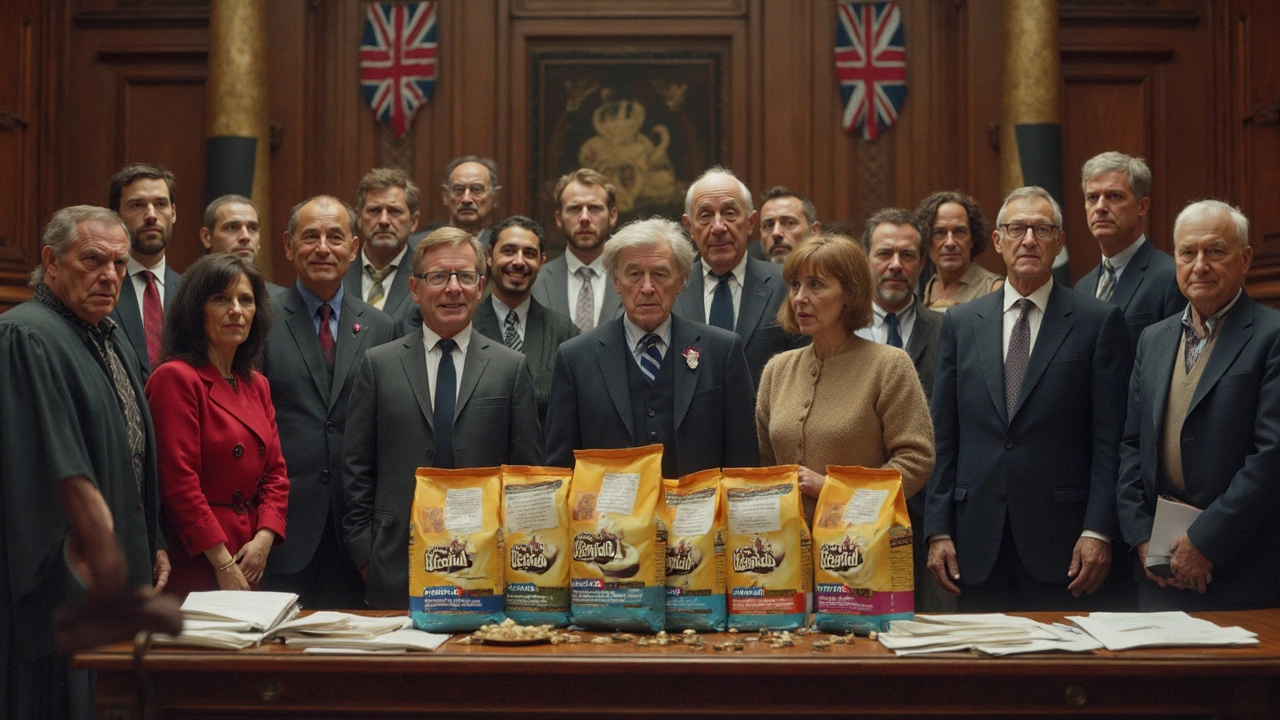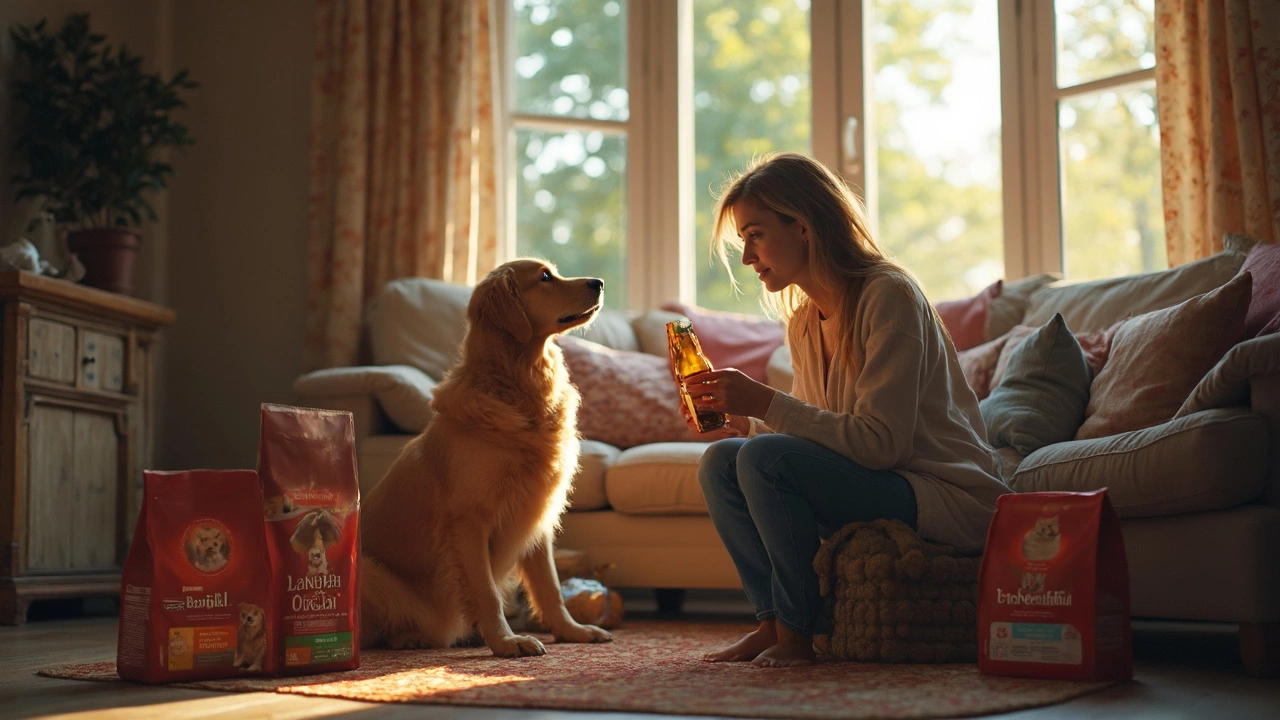If you’ve spotted headlines about a lawsuit against Purina Beneful dog food, you’re probably wondering what the fuss is about and if it’s safe to keep feeding it to your pup. The lawsuit didn't come out of nowhere — upset pet parents reported everything from vomiting to seizures in their dogs, and fingers quickly pointed to what was in those colorful kibble bits. While some stories sounded dramatic, they definitely sparked a lot of worry among dog owners who just want the best for their pets.
Turns out, the legal mess wasn’t just about a few bad bags. The lawsuit claimed there were unsafe ingredients and even toxins in Beneful that might’ve made dogs sick. It got people talking about what's really in dog food and whether companies are doing enough testing before products hit the shelves. If you're scanning the ingredient list on your dog's food bag right now, you're not alone.
- Why Did Purina Beneful Face a Lawsuit?
- What Were the Main Claims and Complaints?
- How Did the Lawsuit Affect Dog Owners?
- Tips for Picking Safe Dog Food
Why Did Purina Beneful Face a Lawsuit?
The buzz around the Purina Beneful lawsuit kicked off in early 2015. A California dog owner named Frank Lucido filed a class-action suit, saying that his three dogs became sick after eating Beneful. Sadly, one of his dogs even died. He wasn’t the only one talking, either—thousands of pet parents across the country reported similar problems—vomiting, bruising, unusual lethargy, and even seizures. People started to connect the dots and pointed fingers at the dog food, specifically the Beneful line.
The lawsuit pulled up some pretty specific complaints. The main worry was about ingredients like propylene glycol and "mycotoxins" (nasty toxins from mold) found in grains. Plaintiffs said these were potentially harmful to dogs, especially if eaten daily. While propylene glycol is actually FDA-approved and also found in some human foods, not everyone feels comfortable with it in pet food. The lawsuit even mentioned stories of pets allegedly dying after eating Beneful, which made dog owners panic and start googling ingredient lists.
Plaintiffs argued that Purina should’ve warned customers. To add to the confusion, incidents weren’t isolated—reports seemed to pop up from all over the U.S. Here’s a quick look at the reported complaints and the scale:
| Year | Estimated Complaints | Common Symptoms |
|---|---|---|
| 2011-2014 | Over 3,000 | Vomiting, loss of appetite, seizures |
| 2015 (Year of lawsuit) | Hundreds/month | Unusual bruising, kidney issues |
While the FDA later investigated dozens of these complaints and didn't find evidence of toxins at dangerous levels, the lawsuit forced a big conversation about how well pet food is really monitored. Purina, for its part, has always denied the claims, saying Beneful is safe and heavily tested. Still, this lawsuit made a lot of dog owners rethink how they shop for their pets’ food.
What Were the Main Claims and Complaints?
The Purina Beneful lawsuit really took off in 2015 when a pet owner filed a class-action suit claiming that the food made thousands of dogs sick. People said their dogs came down with symptoms like vomiting, diarrhea, weight loss, liver problems, and even seizures. They weren’t just sharing stories on forums. Over 3,000 complaints poured into websites and legal teams, putting a ton of pressure on Purina to answer up.
The main gripe? Owners believed Beneful contained harmful toxins, including a chemical called propylene glycol. While the FDA says this chemical is usually safe for dogs, some folks didn’t buy it, especially when mixed with reports of mold and suspicious smells from a few bags. There were also claims that mycotoxins—toxins from certain molds—ended up in the food, and that’s what triggered all those scary symptoms.
Here’s a look at the most common complaints in numbers:
| Complaint Type | Reported Cases |
|---|---|
| Vomiting/Diarrhea | ~2,000 |
| Weight Loss | ~1,200 |
| Liver or Organ Issues | ~700 |
| Seizures | ~400 |
Plaintiffs said the labeling was misleading too. They felt the food was marketed as healthy but delivered unexpected risks instead. Some lab tests from pet owners showed mold spores and chemical traces, though not all results lined up across the board, which made the lawsuit more complicated.
With all these complaints stacking up, people started questioning how much testing goes into mainstream dog food and what really gets prioritized: pet safety or the bottom line?

How Did the Lawsuit Affect Dog Owners?
The whole Purina Beneful lawsuit left a lot of dog owners confused, frustrated, and straight-up worried about what their dogs were eating. For folks who had been buying Beneful for years, it was like the rug got pulled out from under them. Suddenly, there were reports on social media and in the news about dogs getting sick, and nobody wanted to take chances with their best friend’s health.
Thousands of people started calling their vets, swapping food brands overnight, and spending hours online trying to figure out what was safe. Some owners shared photos and stories about their pups having digestive problems, acting sluggish, or worse. Many joined the class-action lawsuit, looking for answers and some kind of justice—not just a refund for a bag of food but peace of mind.
Check out how the situation played out for owners during the peak of the controversy:
| Action Dog Owners Took | Percentage (Based on Surveys) |
|---|---|
| Switched to a new dog food brand | 68% |
| Contacted their veterinarian about Beneful | 42% |
| Tried homemade diets | 17% |
| Joined online forums/support groups | 21% |
Even owners whose dogs never got sick started reading labels a lot more carefully, learning how to spot weird additives or sketchy ingredient names. If you ever thought picking dog food was simple, the Beneful lawsuit probably changed your mind. Many pet parents now keep an eye out for watchdog groups, FDA recalls, and online reviews before making food choices. That extra caution probably helped dogs everywhere, even outside the Beneful crowd.
Tips for Picking Safe Dog Food
You shouldn’t have to stress every time you fill your dog’s bowl. The best way to dodge another Purina Beneful lawsuit situation is to be a smart shopper and keep an eye out for red flags. Here’s what counts when you want your dog’s food to be both tasty and safe:
- Check the label for specifics: Good dog food shouldn’t hide behind vague words like "meat by-products" or "animal meal." Look for clear protein sources, like "chicken," "beef," or "salmon" as the first ingredient.
- Stay away from mystery additives: Watch out for weird chemical names or dyes. Some artificial colors and preservatives—such as BHA, BHT, or propylene glycol—have raised concerns in animal studies.
- Scan for recent recalls: Make it a habit to check the FDA’s pet food recall list at least once a month. It’s updated whenever there’s a problem. (You can find it at fda.gov on the Animal & Veterinary section.)
- Choose brands that test their food: Better dog food companies post info on their safety testing, sourcing, and quality control. Transparency is a good sign they care about your pet’s health.
- Talk to your vet: Vets get real talk from dog owners every day. If you’re not sure about a food or you see weird symptoms in your dog, just ask your vet for their take.
Here’s a quick table showing some common signs that might mean dog food has been recalled, plus where you can check for updates:
| Sign | What to Do | Where to Check |
|---|---|---|
| Sudden change in food smell or texture | Stop feeding, call vet if dog seems ill | FDA Pet Food Recalls Page |
| Dogs develop vomiting, diarrhea, or lethargy after new bag | Get medical advice; save packaging for evidence | FDA, manufacturer’s website |
| Media reports about class-action lawsuits | Double-check your lot/batch number online | FDA, social media, legal news |
Pickiness might seem annoying, but it’s actually smart when it comes to protecting your pup. Dogs trust us to make the right choices—so anytime a bag of food seems off or there’s a new headline about a recall, it’s always better to be extra careful and double-check.
